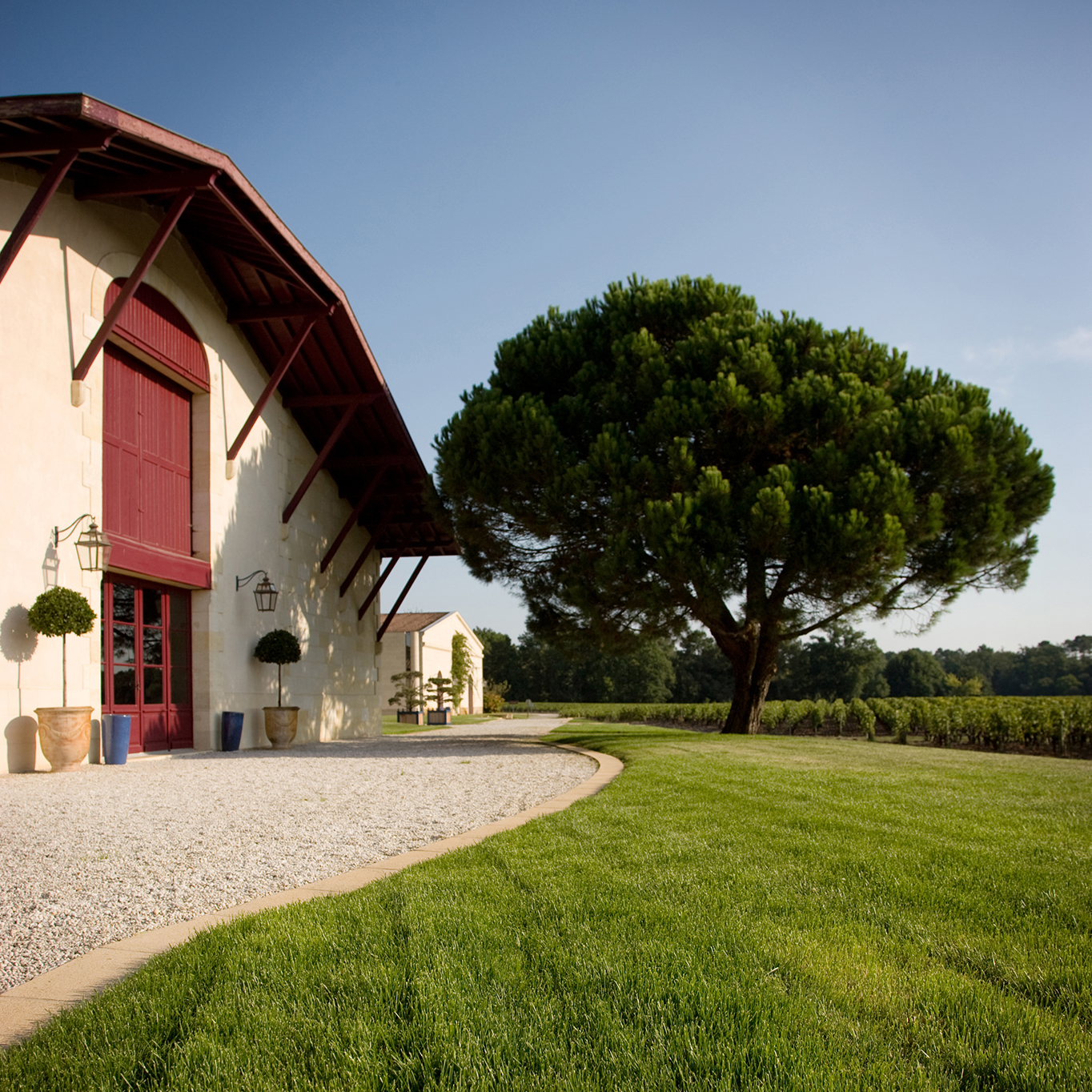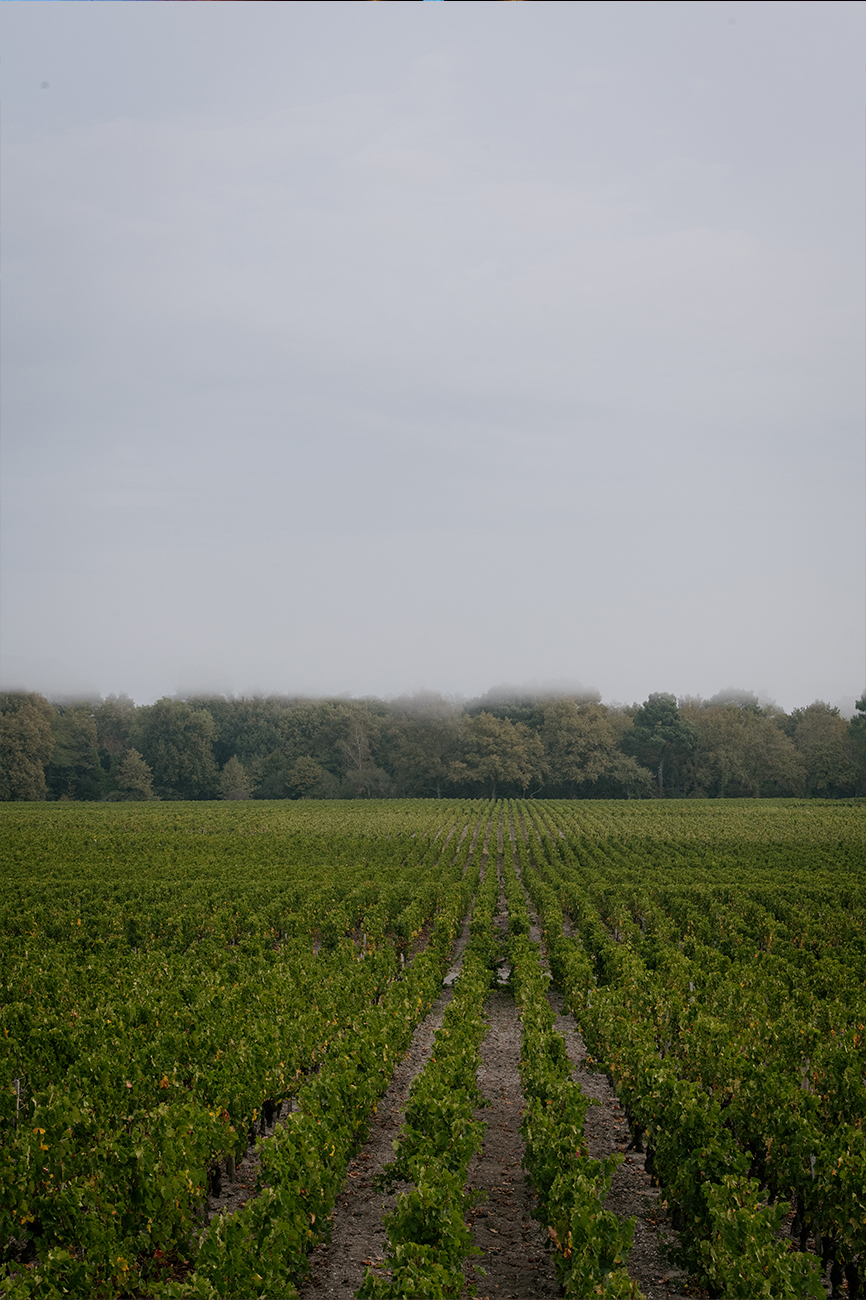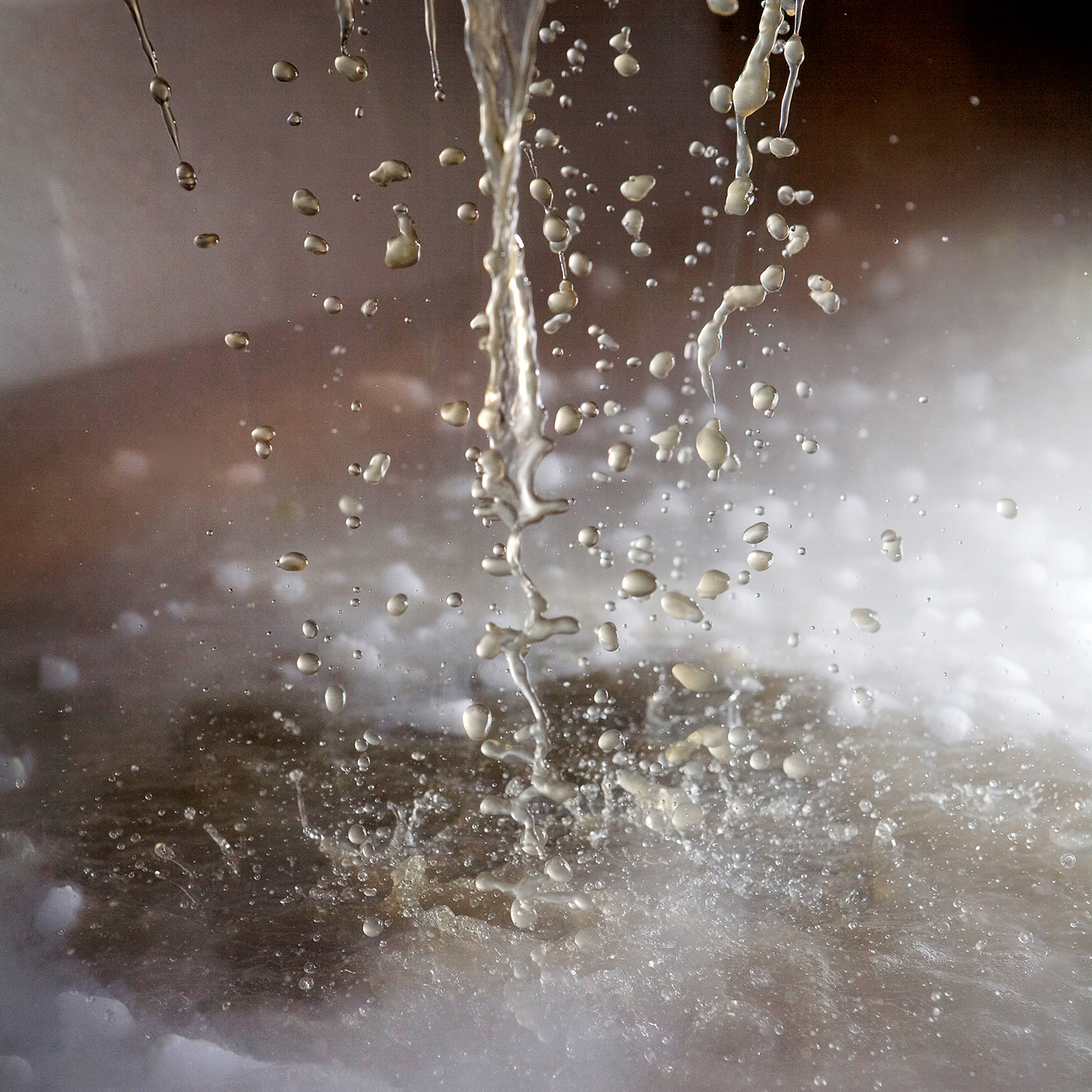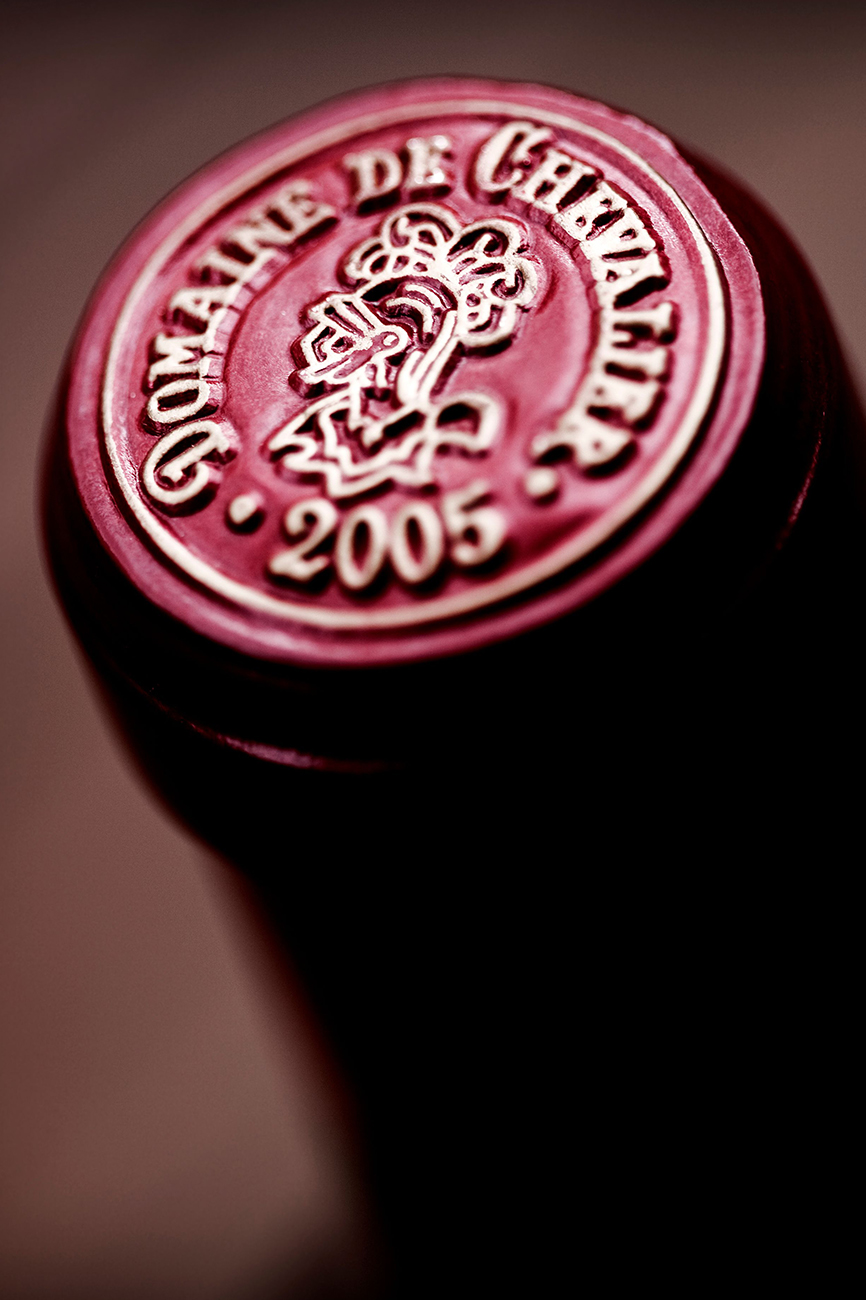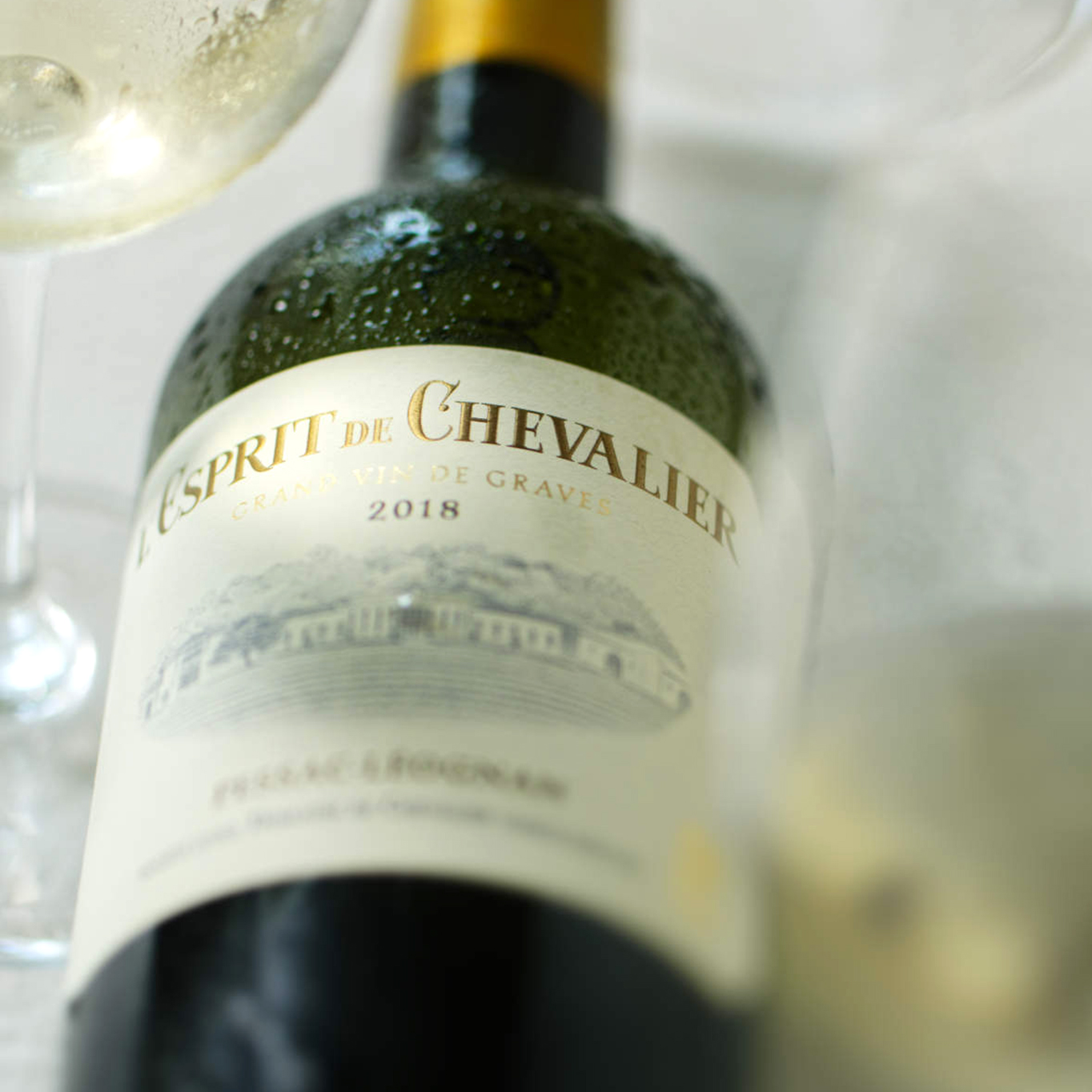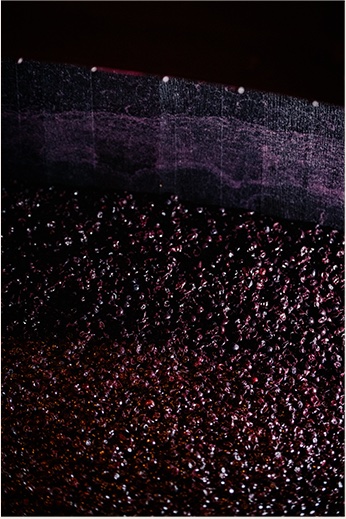It is the quality of the harvest that marks
the success of a great wine
meticulous work
the harvest
The harvest is the ultimate illustration of the concern for perfection that motivates those responsible for vineyard management at Chevalier. It can justly be claimed that nowhere else is sorting performed with such uncompromising thoroughness. In some years, with all these grapes sorted and left on the ground, the vineyard offers a paradoxical spectacle that never fails to amaze visitors…
From three to four weeks before the approximate date of picking, the crop is carefully monitored and checked. The juices are analysed and the berries are weighed regularly. And to confirm these analyses, the berries are regularly tasted, as in the end this is the only way to identify the flavour quality. This tasting is particularly important for red grapes, where they do not necessarily reach physiological and phenolic ripeness at the same time…
harvest
in white
The white grapes are usually picked in the first half of September, around a fortnight before the reds. The white harvest is thus less affected by any autumnal rains. This explains why “lesser” vintages for the red are sometimes exceptional for the white. It should also be borne in mind that, while perfect ripeness in great years for reds necessarily goes hand in hand with hot weather, fine whites, which need to retain their freshness, are somewhat less demanding in this respect.
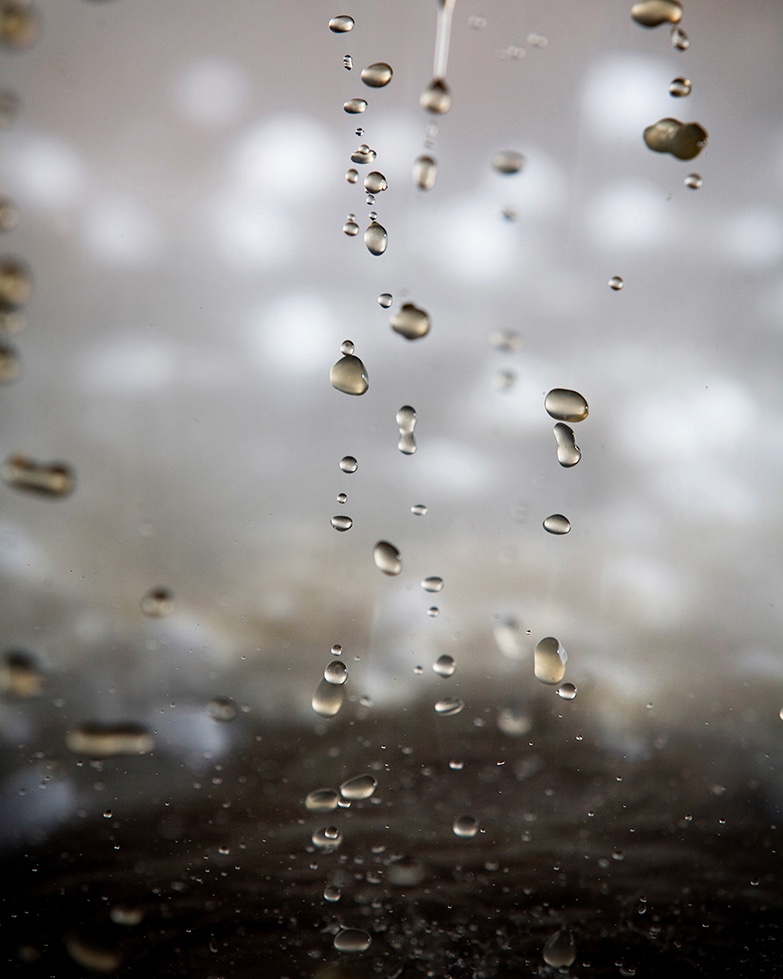
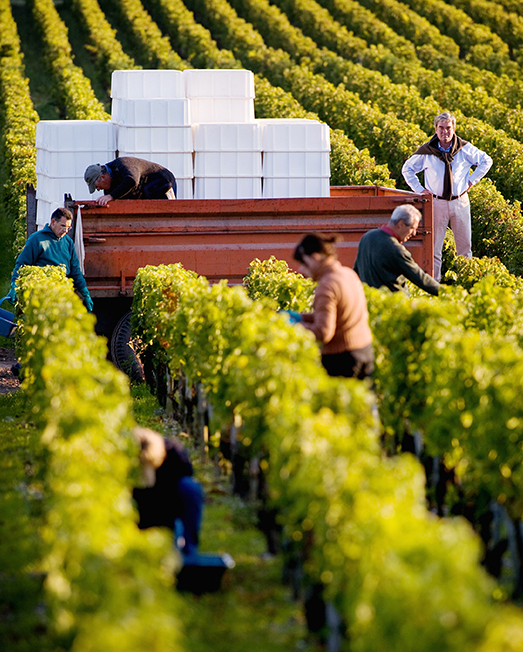
Picking a hundred
times over
On a given plot of vines, observation shows that, as is the case everywhere in nature, not all the fruit ripens at the same moment. We therefore harvest each grape as and when it ripens, by making successive passes through the vineyard. On each pass, the pickers take between 10 and 30% of the plot’s production… This extremely painstaking work requires a team of 35 people who may have to work for two or three weeks, whereas a traditional harvest takes only a few days.
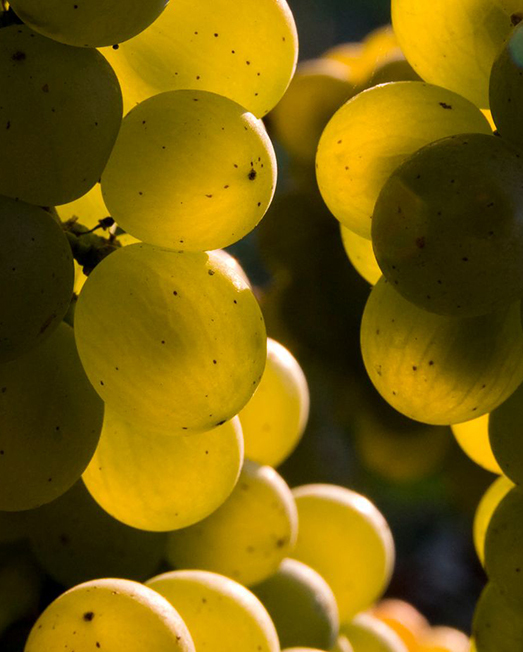
Ripeness
& purity
The quest for perfect ripeness is all the more essential here, as white wines do not contain tannins, which in red wines can mask any slight lack of balance. But, as nature works well, we can recognise “by eye” a difference in ripeness of a few days between several bunches of white grapes. It is even easier to identify damaged berries, which are manually removed from the bunches using secateurs.
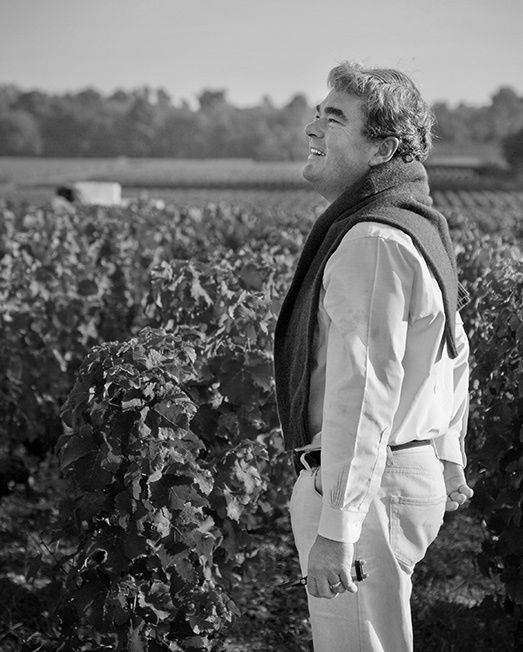
Clockwork attention
to detail
Trained over many years and returning vintage after vintage, the team of pickers is well versed in the technique of selection by observation and the almost clockwork attention to detail it requires. In addition, the pickers work under the constant supervision of one or two estate managers.
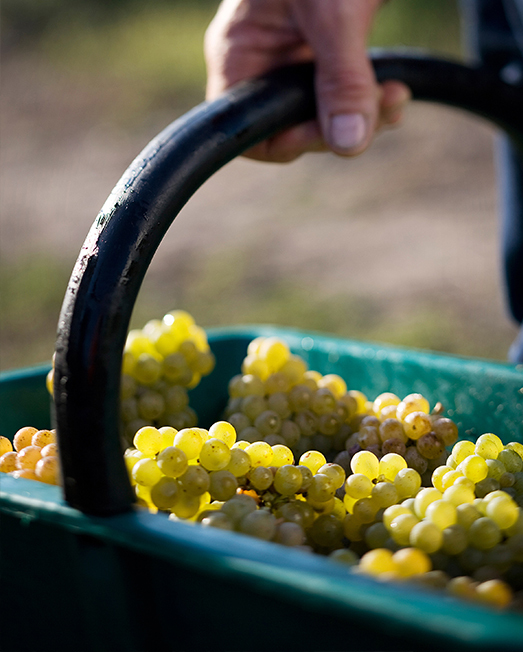
Small
volumes
To avoid crushing the berries and the possible release of juice that could oxidise, the bunches are placed in small-sized crates (30 kg maximum). In this way, the fruit remains fully intact until it is pressed. After picking, the grapes are sent directly to the press.
harvest
in red
Once the harvesting of the white vines is finished, our team of pickers is enlarged to work on the reds. The harvest usually starts in mid-September, with the Merlot. It continues with the Cabernet Franc and Petit Verdot, which ripen later, and finally the Cabernet Sauvignon in the first half of October.
the fruit
triple
sorting
A preliminary selection in the vineyard allows the elimination of grapes that are visibly damaged and those that show less intense reflections, a sign of insufficient ripeness. This work by the pickers is then confirmed on the first sorting table.
After separation of the berries in the destemmer, the second sorting table allows for a definitive selection, berry by berry. This last operation aims to remove unripe berries that were not visible in the bunch.
Once the sorting phase is complete, the grapes are lightly crushed before filling the vats. To maximise the integrity of the skins, which are fundamental to the quality of the tannins in red wine, we have always filled the vats by gravity, without the use of a pump.
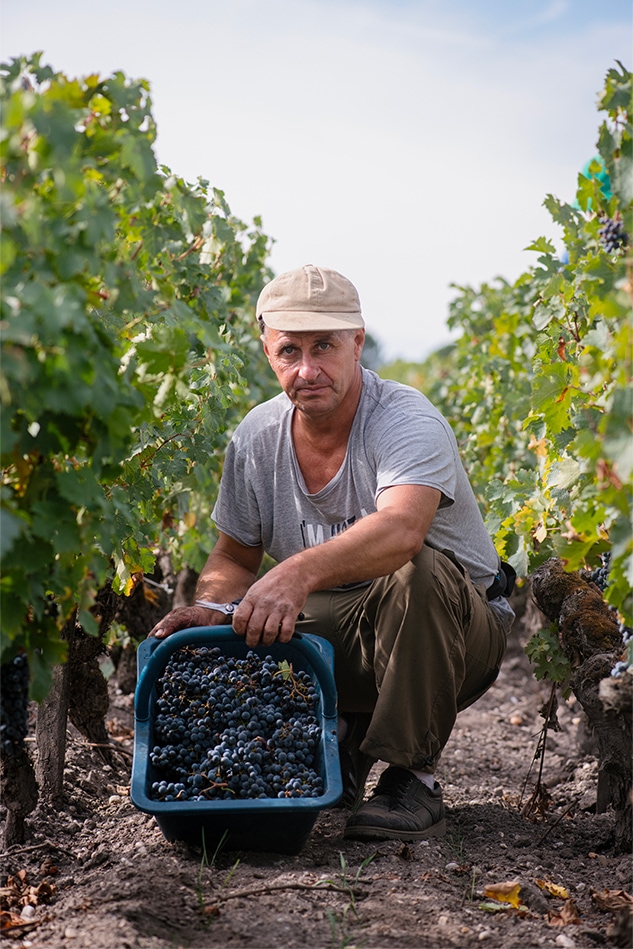
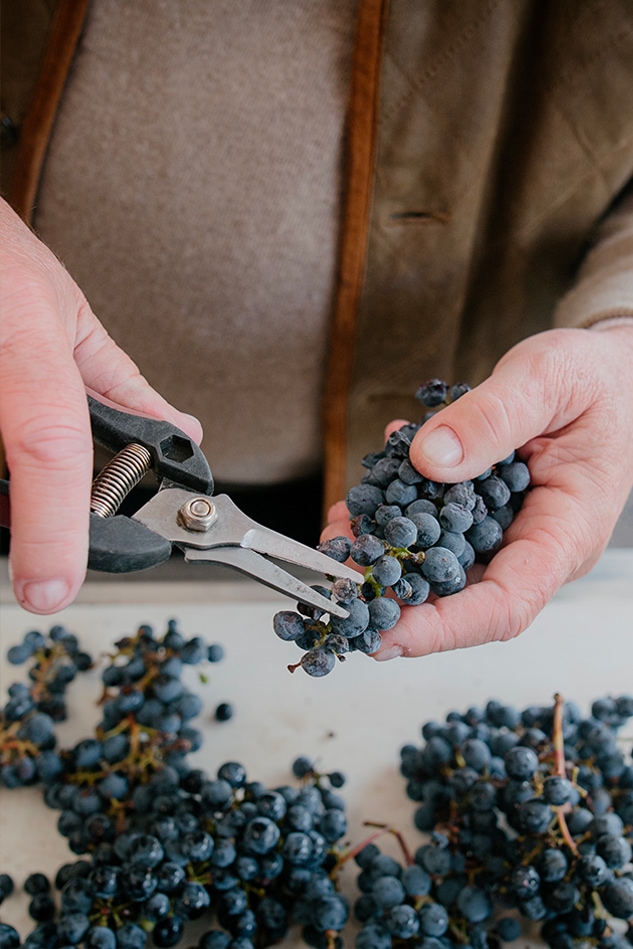
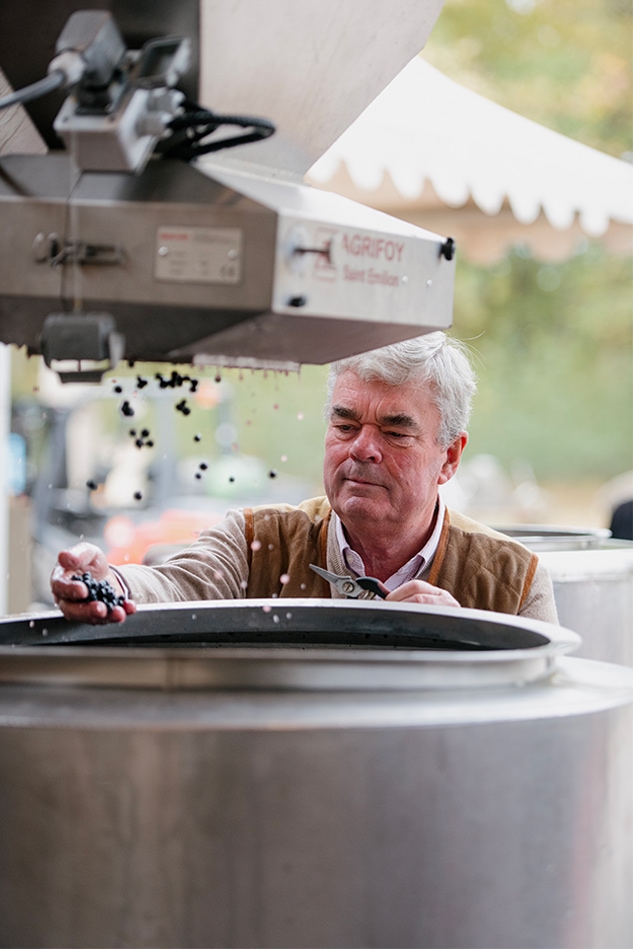
very fine !
I really like this English expression, an admirably succinct way of describing a great wine. It conveys not only the idea of exceptional quality, but also of finesse, balance, elegance, and complexity…
cellar
White wine
It is respect for the values of the terroir, revealed by organic farming through the purity of the fruit, the choice of harvesting techniques, and vinification and ageing in barrel, that allow us to create a fine white wine for ageing, as only a few great terroirs in the world are able to do…
CELLAR
red wine
All vintages are different… It is respect for this difference, along with permanent observation and knowledge of the terroir, that allows us to anticipate the inner nature of the vintage. The vinification, if I may say so, only follows the flow… It should extend to the cellar the intrinsic values of the terroir that are passed on by the harvest.
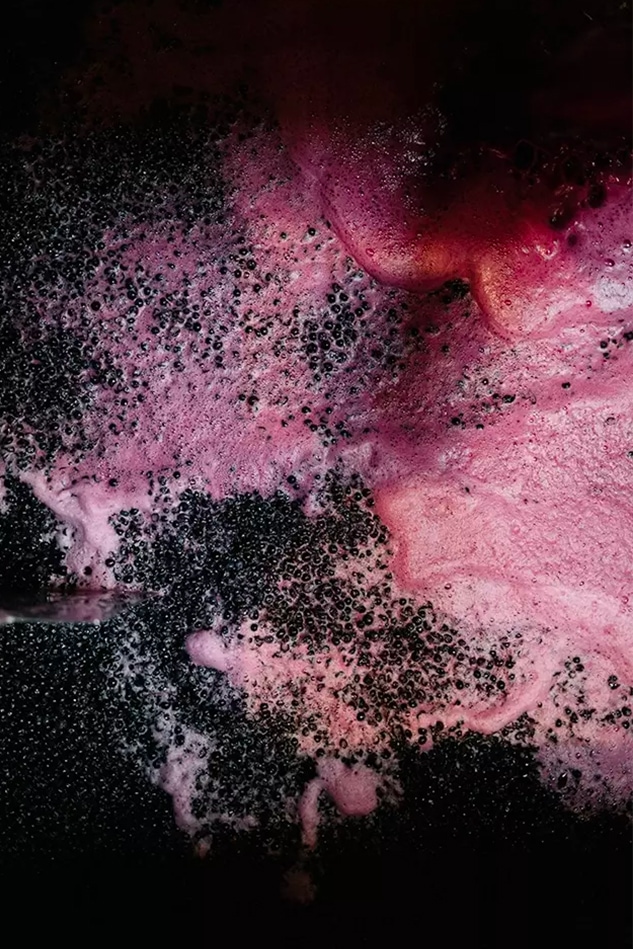
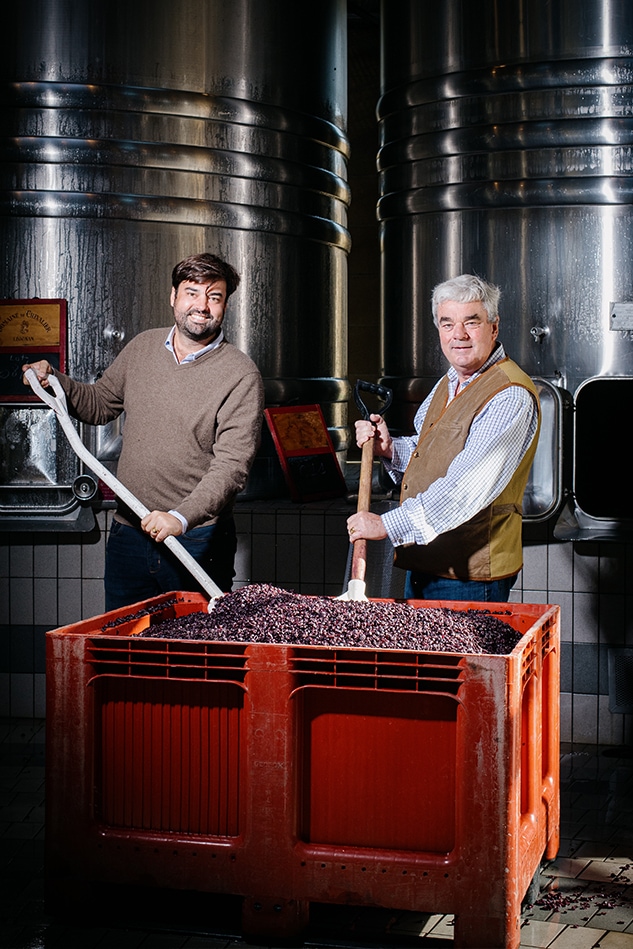

white
wine
Vinification in barrel
At Chevalier, all stages of the vinification take place in barrels, some of them new. This choice is dictated less by concern for an oaky flavour in the wine – even if this undeniably brings positive values – than by the opportunity it gives for an extremely selective harvest and very precise blending. In fact, we are pioneers of this method, from which we have never wavered. This is the only approach which, by its extreme rigour, guarantees absolute respect for the grapes and the specific expression of the vintage.
Slow and gentle pressing
Pressing takes place slowly and gently in a pneumatic press. This allows a first qualitative selection of press fractions, which are kept separate throughout the winemaking process. The final press fraction is vinified apart.
Running off into barrel and settling
The must is then run off directly into barrels in a cold room, to bring the temperature down to around 16/18°C if required. Then the settling phase begins. The clear juice is decanted by gravity after approximately 24 hours… Thanks to the quality of the sorting in the vineyard, the solids are of very high quality. It is thus possible to retain a high percentage in the juice, to optimise the structure of the wine.
Barrel fermentation
The barrels are then taken to the vinification cellar, where the fermentation takes place. The percentage of new oak adopted for this phase, following long experimentation, is deliberately kept at around 30%.
Depending on the year and the alcohol potential of the grapes, the fermentation may require the addition of external yeasts.
During this period, the temperature commonly rises to 25°C or even 27/28°C, giving Chevalier’s wines a very different expression than they would have if fermented in tank.
Barrel fermentation is the only approach which, by its extreme rigour, guarantees absolute respect for the grapes and the specific expression of the vintage.
Highly selective blending
« I have observed that the best barrel is never better than the final blend ».
The blend is thus made early, in January following the harvest, to lay the foundations as soon as possible for the production of a great wine, to which each batch adds its complexity… The choice of the barrel for vinification allows us to respect the origin of the batches right up to the time of blending and thus to refine the selection by taking into account the specific nature of the vintage… Blending, with selection of the first wine, is a particularly delicate operation. At Chevalier, our entire management team takes part, along with our consultant oenologist Stéphane Derenoncourt. It is clear that the option of vinification in barrels, as practised at Chevalier, is a very elitist approach to quality and it could not be carried out successfully on a larger vineyard…
Lees stirring: multi-faceted added value
Regular lees stirring further strengthens the structure of the wine and refines its qualities… This technique gives it more volume, a silkier, more fragrant character and increased power, but also an excellent aptitude for ageing while preserving great freshness.
Barrel ageing
The wine is aged on increasingly fine lees until the end of the first summer. The wine then spends a second winter in barrel, where it undergoes natural clarification so that it only requires a very light filtration at the time of bottling in the spring.
red
wine
Moderate approach to extraction
In practice, respect for a great terroir requires a moderate approach to extraction, which must be carried out in accordance with the vintage and not on the basis of an excessive search for power. At Chevalier, over-extraction is rigorously prohibited.
« It is the quality of the grapes themselves that should guide the winemaker’s hand… »
Fully adapted vat room
To take into account the diversity of the terroir, the grape varieties and the age of the vineyard, the choice has gradually moved towards a mixed vat room, including concrete, wooden and steel vats of various sizes, mostly ranging from 70 to 120 hectolitres.
Slow fermentation
The fermentation phase is preceded by a natural maceration of a few days, intended to promote fruit expression. The fermentation itself takes place slowly, at a carefully controlled temperature, which can naturally rise to 30/32°C. It is marked out by regular pumping over, which may be accompanied by punching down of the cap, an ancestral technique that has never been abandoned at Chevalier.
This manual technique consists in breaking up the floating cap of skins using a long wooden stick, to facilitate gentle extraction.
Traditional maceration
Maceration, which refines the tannins among other things, lasts between 15 and 25 days, depending on the structure of the wine, with frequent taste checks to follow its progress…
The temperature is gradually reduced to 20/22°C. The wine is then directly run off into new barrels to undergo its malolactic fermentation, according to an ancestral tradition.
Early blending
Here again, the final blending takes place in January. At Chevalier, we believe that the marriage of the tannins, particularly between the different grape varieties, must take place early so that they are perfectly integrated. The general blending philosophy is to express the natural values of the terroir, namely density and depth, but also complexity, finesse and elegance. Depending on the year, the selected batches represent between 40 and 65% of the total production of the red vines.
From running off until blending, the wines are tasted very regularly.
Barrel ageing
The red wine is aged entirely in barrel. For the first wine, the length of time in barrel ranges from 14 to 24 months and the proportion of new oak varies from 40 to 60% depending on the power of the vintage. Racking is done traditionally, from barrel to barrel. Bottling takes place in June.
The ageing period is reduced to around 12 months for the second wine, l’Esprit de Chevalier, using two-year barrels. The third wine spends nearly 10 months in three- to four-year barrels.
Le Rosé
de Chevalier
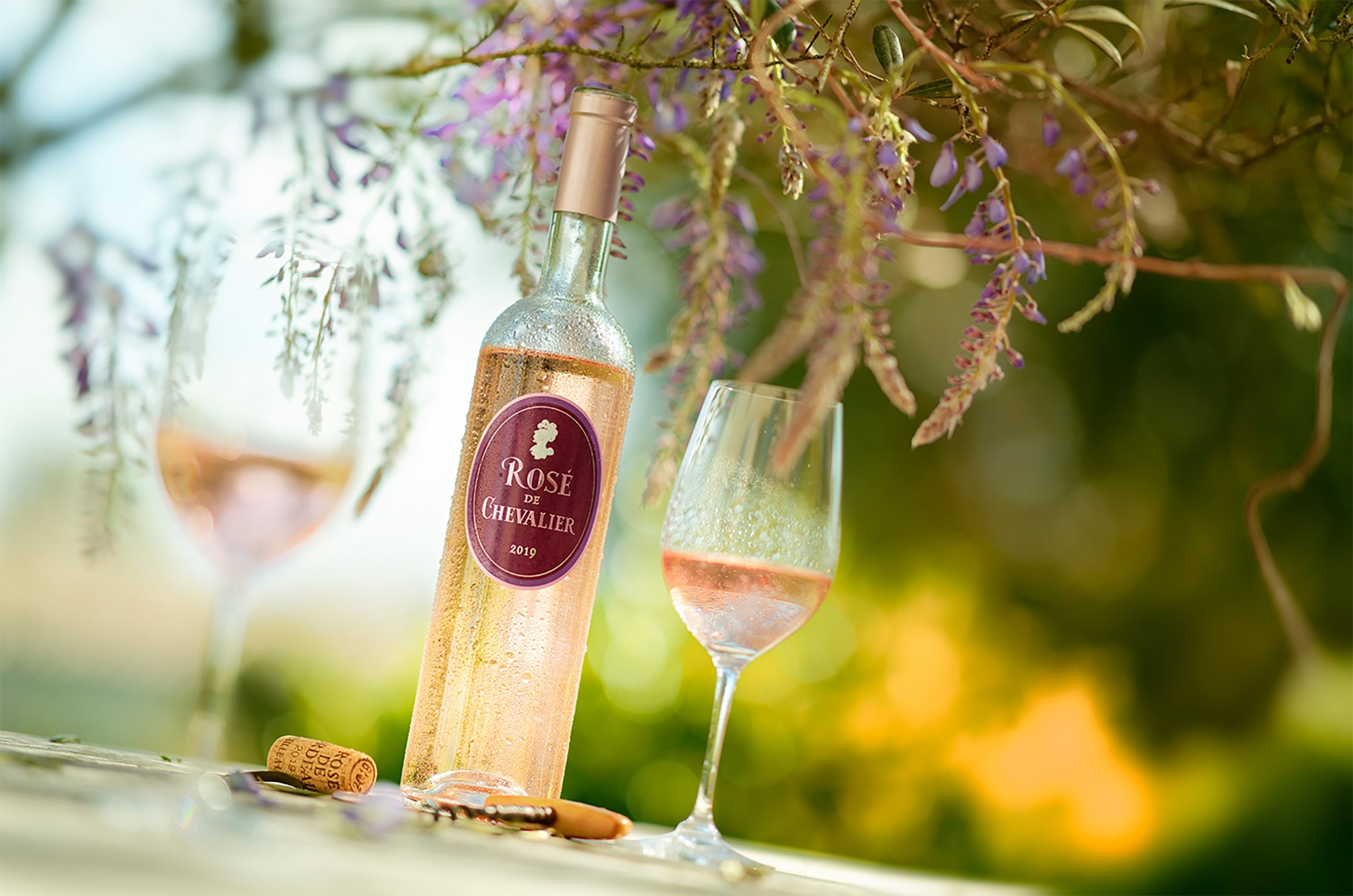
The Domaine de Chevalier produces a small quantity of rosé wine made from ” saignée” (draining off juice, not macerated), primarily from Cabernet Sauvignon, and from direct pressing, fermented separately.
The Domaine wanted to emphasize, as best as possible, the quality of this rosé wine and the careful attention it receives.
To do this, the focus was placed, on one hand, on a vinification choice favoring a bright vibrant color, intense and fruity aromas, freshness, delicacy, and finesse in the finish.
On the other hand, for its presentation and to serve as a setting for this beautiful rosé, we chose a stylish, modern, high-end bottle. Similarly, an elegant label of original shape reflects the class, and modernity of the product.

